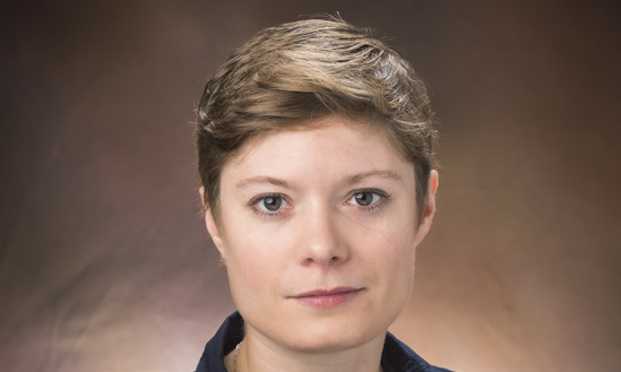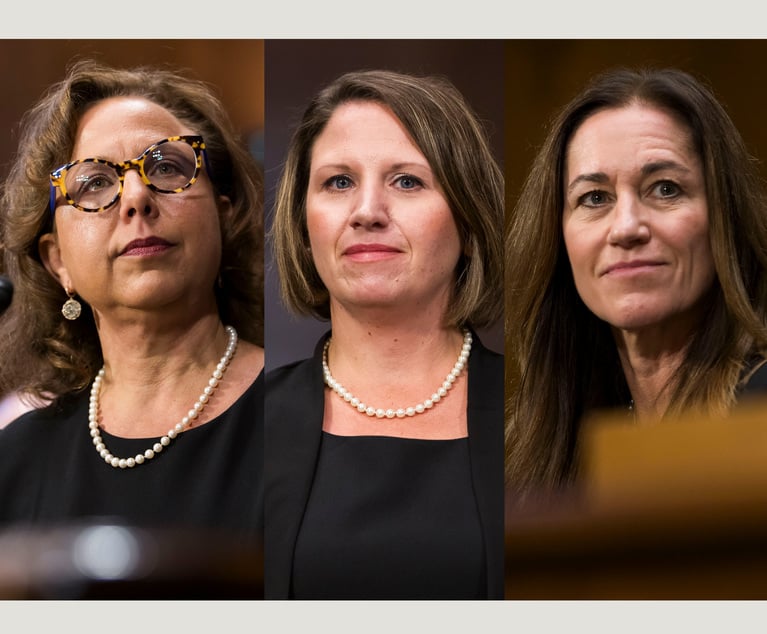Shifting Costs and Incentives: Changes to State, Federal Air Pollution Regulations
Under the Clean Air Act, the regulations air pollution sources must comply with and depend on whether the source counts as “major” or “nonmajor.” Pennsylvania's proposed rulemaking would apply to emissions sources uniformly, regardless of their categorization or yearly emissions volume.
March 07, 2019 at 11:37 AM
6 minute read
 Kathleen Kline of Greenberg Traurig
Kathleen Kline of Greenberg TraurigLast January, the U.S. Environmental Protection Agency (EPA) issued a memorandum withdrawing the “once in always in” (OIAI) policy that had provided interpretation of the Clean Air Act since 1995. Under the Clean Air Act, the regulations air pollution sources must comply with and depend on whether the source counts as “major” or “nonmajor:” the OIAI policy dictated that once a source qualified as major, subsequent changes in its emission levels would not enable the source to downgrade to nonmajor. In making its decision to withdraw the policy, the EPA found that imposing a permanent categorization on emitting sources was contrary to the plain language of the Clean Air Act. In part, the statute requires the EPA to consider emissions controls a facility employs in classifying it as major or nonmajor. A logical interpretation of this requirement allows for downgrading of a major source following its implementation of controls that lower its emissions to below the qualifying threshold. The EPA relatedly found that permanently categorizing facilities as major sources disincentivized their implementing voluntary improvements or achieving greater efficiencies. Rescinding the OIAI policy, the EPA determined, could remove this barrier and lead to increased voluntary technological or operational improvements at facilities.
The EPA did receive pushback on this rescission. In a letter to then-administrator Scott Pruitt, a group of senators expressed concern that the expectations of voluntary improvement were too optimistic. Allowing former major sources to downgrade their categorization would subject them to lower emission limits for certain pollutants, and would eliminate limits for certain others. The net effect of the withdrawal of OIAI on emissions will depend, it seems, on whether voluntary improvements facilities undertake to achieve a downgraded status will offset the reduction in mandatory controls those facilities might make once that status is achieved. In urging Pruitt to reinstate—at least temporarily—the OIAI policy, the dissenting senators claimed that this calculus had not been, and needed to be, fully considered.
In addition, shortly after issuance of the guidance memorandum withdrawing OIAI, the State of California sued the EPA, requesting the that the District of Columbia Circuit Court review the agency's action and block rescission of the OIAI policy. California argues that the EPA's action violates the congressional intent behind the Clean Air Act and constitutes an arbitrary and capricious reversal of the agency's prior position, thereby violating the Administrative Procedure Act.
Roughly a year later, with California's challenge to the OIAI withdrawal still pending in court, the EPA sent a proposed rulemaking to the Office of Management and Budget at the end of February, intending to enshrine in regulation this change of policy. Meanwhile, Pennsylvania has proposed a change to its own air quality permitting program at the state level. In contrast to the withdrawal of OIAI, Pennsylvania's proposed rulemaking would apply to emissions sources uniformly, regardless of their categorization or yearly emissions volume. This proposal is a uniform increase in operating and permitting fees for major and nonmajor emissions sources. Pennsylvania's Department of Environmental Protection (DEP) considered three different schemes for increasing fees—two options were based on the permitted source's annual emissions in tons, and would have increased permit costs in proportion thereto. The DEP ultimately determined that the third option, assessment of a flat maintenance fee on each facility, would generate the same amount of revenue in the most equitable fashion. The DEP is currently accepting public comment on its proposal, so the details of these proposed fee increases may change before the rulemaking, if approved, goes into effect.
The goal of Pennsylvania's proposed fee increase is to ensure continued funding for the DEP's Air Quality Program, to ultimately reduce air pollution and protect public health and the environment. The Air Quality Program's fiscal health is currently compromised due to steadily decreasing revenue from permitting fees; this shrinking revenue stream is in turn due largely, and somewhat ironically, to a decrease in the commonwealth's air pollution emissions of nearly 40 percent since the year 2000. As permitting fees have historically been based on emission volumes, decreased emissions lead to lower costs to facilities and lower income for the Air Quality Program.
One question raised by the commonwealth's proposed fee structure is what incentives it will create for facilities of various sizes, with various emission volumes—and what possible disincentives. As proposed, the changes would somewhat uncouple emission volumes from fee amounts. While higher-emitting facilities will still be subject to higher fees, the proposed rulemaking would flatten the proportionality of emissions to fees, and may render certain technological or operational improvements less cost-effective for facilities, as lower emissions levels correlate less with lower permitting costs. The exact change in fees and their proportionality to emissions will vary based on facilities, so regulated sources will likely undertake individualized cost-benefit analyses with respect to voluntary improvements.
Another, more complicated, question concerns what the interplay will be between the OIAI withdrawal and Pennsylvania's rulemaking, if it goes into effect. On the one hand, the withdrawal of OIAI should encourage facilities to make upgrades, expenditures or other changes that will lead to efficiencies—the policy's withdrawal suggests alignment of the EPA's interest and the facilities' in increased efficiency and lowered emissions. On the other hand, Pennsylvania's regulatory proposal may disincentivize the voluntary improvements that, in part, motivated the EPA's change in policy. The effect these somewhat conflicting changes in emissions regulation will have on covered facilities, particularly in Pennsylvania, is unclear, but the case-by-case decision-making that is likely to follow should be worth monitoring. On a nationwide level, the long-term effects of the OIAI withdrawal in conjunction with the various states' laws will likely become more clear, and so will the relative effectiveness of permanent regulations as compared to voluntary innovation and operating improvements.
Kathleen M. Kline is a litigator in the environmental practice of Greenberg Traurig. She focuses on complex matters including environmental litigation, securities and derivative actions, and financial services litigation. Contact her at [email protected].
This content has been archived. It is available through our partners, LexisNexis® and Bloomberg Law.
To view this content, please continue to their sites.
Not a Lexis Subscriber?
Subscribe Now
Not a Bloomberg Law Subscriber?
Subscribe Now
NOT FOR REPRINT
© 2025 ALM Global, LLC, All Rights Reserved. Request academic re-use from www.copyright.com. All other uses, submit a request to [email protected]. For more information visit Asset & Logo Licensing.
You Might Like
View All
Pa. Federal District Courts Reach Full Complement Following Latest Confirmation

The Defense Bar Is Feeling the Strain: Busy Med Mal Trial Schedules Might Be Phila.'s 'New Normal'
7 minute read
Federal Judge Allows Elderly Woman's Consumer Protection Suit to Proceed Against Citizens Bank
5 minute read
Judge Leaves Statute of Limitations Question in Injury Crash Suit for a Jury
4 minute readTrending Stories
- 1Munger, Gibson Dunn Billed $63 Million to Snap in 2024
- 2January Petitions Press High Court on Guns, Birth Certificate Sex Classifications
- 3'A Waste of Your Time': Practice Tips From Judges in the Oakland Federal Courthouse
- 4Judge Extends Tom Girardi's Time in Prison Medical Facility to Feb. 20
- 5Supreme Court Denies Trump's Request to Pause Pending Environmental Cases
Who Got The Work
J. Brugh Lower of Gibbons has entered an appearance for industrial equipment supplier Devco Corporation in a pending trademark infringement lawsuit. The suit, accusing the defendant of selling knock-off Graco products, was filed Dec. 18 in New Jersey District Court by Rivkin Radler on behalf of Graco Inc. and Graco Minnesota. The case, assigned to U.S. District Judge Zahid N. Quraishi, is 3:24-cv-11294, Graco Inc. et al v. Devco Corporation.
Who Got The Work
Rebecca Maller-Stein and Kent A. Yalowitz of Arnold & Porter Kaye Scholer have entered their appearances for Hanaco Venture Capital and its executives, Lior Prosor and David Frankel, in a pending securities lawsuit. The action, filed on Dec. 24 in New York Southern District Court by Zell, Aron & Co. on behalf of Goldeneye Advisors, accuses the defendants of negligently and fraudulently managing the plaintiff's $1 million investment. The case, assigned to U.S. District Judge Vernon S. Broderick, is 1:24-cv-09918, Goldeneye Advisors, LLC v. Hanaco Venture Capital, Ltd. et al.
Who Got The Work
Attorneys from A&O Shearman has stepped in as defense counsel for Toronto-Dominion Bank and other defendants in a pending securities class action. The suit, filed Dec. 11 in New York Southern District Court by Bleichmar Fonti & Auld, accuses the defendants of concealing the bank's 'pervasive' deficiencies in regards to its compliance with the Bank Secrecy Act and the quality of its anti-money laundering controls. The case, assigned to U.S. District Judge Arun Subramanian, is 1:24-cv-09445, Gonzalez v. The Toronto-Dominion Bank et al.
Who Got The Work
Crown Castle International, a Pennsylvania company providing shared communications infrastructure, has turned to Luke D. Wolf of Gordon Rees Scully Mansukhani to fend off a pending breach-of-contract lawsuit. The court action, filed Nov. 25 in Michigan Eastern District Court by Hooper Hathaway PC on behalf of The Town Residences LLC, accuses Crown Castle of failing to transfer approximately $30,000 in utility payments from T-Mobile in breach of a roof-top lease and assignment agreement. The case, assigned to U.S. District Judge Susan K. Declercq, is 2:24-cv-13131, The Town Residences LLC v. T-Mobile US, Inc. et al.
Who Got The Work
Wilfred P. Coronato and Daniel M. Schwartz of McCarter & English have stepped in as defense counsel to Electrolux Home Products Inc. in a pending product liability lawsuit. The court action, filed Nov. 26 in New York Eastern District Court by Poulos Lopiccolo PC and Nagel Rice LLP on behalf of David Stern, alleges that the defendant's refrigerators’ drawers and shelving repeatedly break and fall apart within months after purchase. The case, assigned to U.S. District Judge Joan M. Azrack, is 2:24-cv-08204, Stern v. Electrolux Home Products, Inc.
Featured Firms
Law Offices of Gary Martin Hays & Associates, P.C.
(470) 294-1674
Law Offices of Mark E. Salomone
(857) 444-6468
Smith & Hassler
(713) 739-1250





